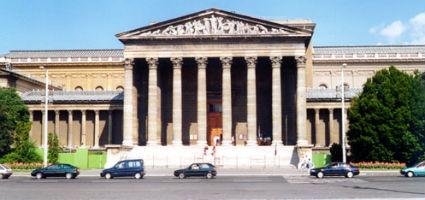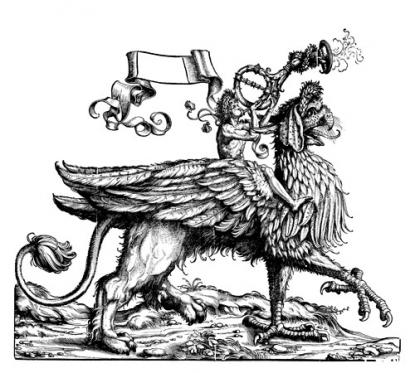2025. July 16. Wednesday
Budapest Museum of Fine Arts - Budapest
 |
Address: 1146, Budapest Dózsa György út 41.
Phone number: (1) 469-7100
E-mail: info@szepmuveszeti.hu
Opening hours: Tue-Sun 10:00-18:00
|
The exhibition has closed for visitors.
2005.07.01. - 2005.10.09.
Museum tickets, service costs:
|
Ticket for adults
(valid for the permanent exhibitions)
|
2800 HUF
|
/ capita
|
|
Ticket for adults
|
3200 HUF
|
|
|
Group ticket for adults
|
2900 HUF
|
|
|
Ticket for students
(valid for the permanent exhibitions)
|
1400 HUF
|
/ capita
|
|
Ticket for students
|
1600 HUF
|
|
|
Group ticket for students
|
1400 HUF
|
|
|
Ticket for pensioners
(valid for the permanent exhibitions)
|
1400 HUF
|
/ capita
|
|
Audio guide
|
800 HUF
|
|
|
Video
|
1000 HUF
|
In raising a worthy monument to his rule, the Emperor Maximilian I (1459-1519), following examples from Antiquity, revived the motifs of the triumphal arch and triumphal procession. He commissioned Albrecht Dürer, the greatest German artist of his age, and other important masters (including Albrecht Altdorfer and Hans Burgkmairt) to prepare an imposing and colossal memorial using the woodcut technique, widespread in Europe only a few decades before.

The result of this request was the Triumphal Arch of Emperor Maximilian I, a woodcut consisting of 36 sheets measuring 3.5 by 3 metres each and printed using 192 blocks, and the Triumphal Procession of Emperor Maximilian I, a series of woodcuts consisting of 135 sheets that together were more than 50 metres long. The Triumphal Arch was first published in 1517/18. The example to be displayed at the Museum of Fine Arts was made by Adam Bartsch in 1799, using the original blocks. It has been lent by Vienna’s Albertina Museum especially for the exhibition.
The triumphal procession was intended to celebrate the deeds and life of the emperor, and to be distributed in large numbers. The finest piece in the series is Dürer’s Grand Triumphal Chariot; 2.3 metres wide and half a metre tall, it consists of eight woodcuts and was published separately in 1522. It is a depiction of a vehicle, drawn by twelve horses, in which the seated figure of the emperor is surrounded by allegorical female figures. To supplement the 102 sheets in its possession, the Museum of Fine Arts, has borrowed the finest of the missing sheets from abroad.
The Triumphal Arch and the Triumphal Procession have so far never been exhibited in Hungary in their entirety: only parts of them have been put on show, their display is a rare occasion even within Europe. It introduces the visitor to the unusual and spectacular realisation, by the greatest German graphic artists of the age, of an exciting Renaissance idea.

The result of this request was the Triumphal Arch of Emperor Maximilian I, a woodcut consisting of 36 sheets measuring 3.5 by 3 metres each and printed using 192 blocks, and the Triumphal Procession of Emperor Maximilian I, a series of woodcuts consisting of 135 sheets that together were more than 50 metres long. The Triumphal Arch was first published in 1517/18. The example to be displayed at the Museum of Fine Arts was made by Adam Bartsch in 1799, using the original blocks. It has been lent by Vienna’s Albertina Museum especially for the exhibition.
The triumphal procession was intended to celebrate the deeds and life of the emperor, and to be distributed in large numbers. The finest piece in the series is Dürer’s Grand Triumphal Chariot; 2.3 metres wide and half a metre tall, it consists of eight woodcuts and was published separately in 1522. It is a depiction of a vehicle, drawn by twelve horses, in which the seated figure of the emperor is surrounded by allegorical female figures. To supplement the 102 sheets in its possession, the Museum of Fine Arts, has borrowed the finest of the missing sheets from abroad.
The Triumphal Arch and the Triumphal Procession have so far never been exhibited in Hungary in their entirety: only parts of them have been put on show, their display is a rare occasion even within Europe. It introduces the visitor to the unusual and spectacular realisation, by the greatest German graphic artists of the age, of an exciting Renaissance idea.
